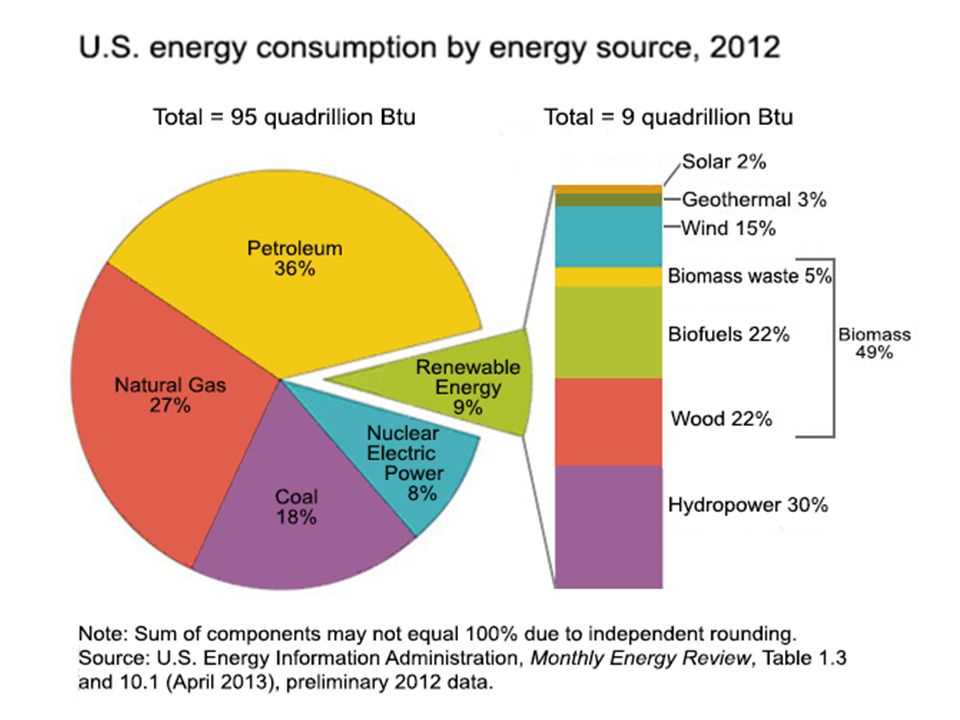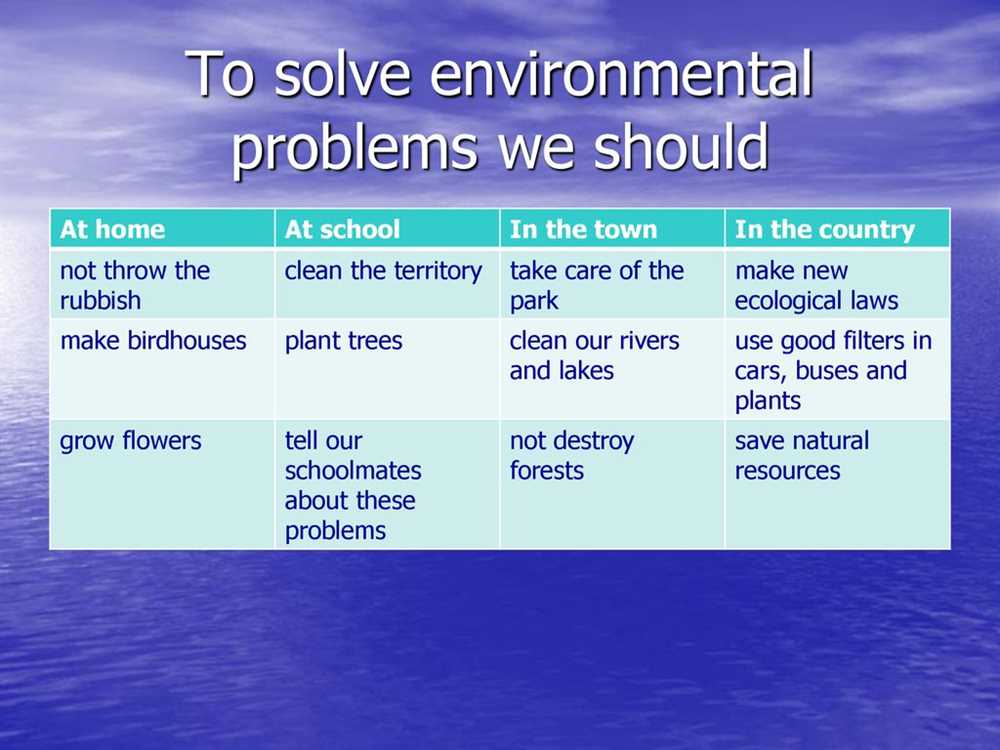
The topic of energy resources and consumption is of critical importance in today’s world as we face the growing challenges of climate change and energy sustainability. In Unit 6 of the AP Environmental Science (APES) curriculum, students delve into the different types of energy resources, their environmental impacts, and the patterns of consumption that influence our energy choices.
One of the key focuses of Unit 6 is understanding the various renewable and non-renewable energy resources available to us. This includes exploring the advantages and disadvantages of sources such as solar, wind, hydroelectric, geothermal, natural gas, coal, and oil. Through this exploration, students gain an understanding of the environmental, economic, and social implications associated with each energy resource.
Furthermore, Unit 6 examines the patterns of energy consumption and the factors influencing them. Students learn about the global and regional disparities in energy consumption, as well as the role of population growth, economic development, and technological advancements in shaping energy demand. By studying these patterns, students develop a comprehensive understanding of the complex relationship between energy production, consumption, and sustainability.
Unit 6 Energy Resources and Consumption APES Exam Review
In Unit 6, we will be exploring the topic of energy resources and consumption in the context of AP Environmental Science. This unit is focused on understanding the different sources of energy that we rely on, as well as the environmental and social impacts of our energy consumption. We will also examine how energy resources are distributed globally and the factors that influence energy consumption patterns.
Key concepts to review:
- Renewable vs. non-renewable energy sources: Understand the differences between these two types of energy sources, as well as the advantages and disadvantages of each.
- Fossil fuels: Learn about the extraction, production, and use of fossil fuels such as coal, oil, and natural gas, including their environmental impacts and contribution to climate change.
- Nuclear energy: Explore the process of nuclear fission and the pros and cons of nuclear energy as a source of electricity.
- Alternative energy sources: Familiarize yourself with different alternative energy sources such as solar, wind, hydroelectric, geothermal, and biomass, and their potential for reducing our reliance on fossil fuels.
- Energy consumption and efficiency: Examine patterns of energy consumption, the factors that influence energy use in different sectors (such as industry, transportation, and residential), and strategies for improving energy efficiency.
This unit will require you to apply your understanding of energy resources and consumption to real-world scenarios. Be prepared to analyze energy data, evaluate the feasibility of different energy options, and assess the potential environmental and social impacts of energy choices. Practice solving energy-related problems and familiarize yourself with relevant equations and calculations. Good luck with your APES exam review!
Overview of Energy Resources
Energy resources are essential in meeting the needs of society and fueling economic development. They provide the power necessary for transportation, heating, cooling, and the operation of various industries. However, not all energy resources are created equal, and their availability, sustainability, and environmental impact vary greatly.
Fossil fuels such as coal, oil, and natural gas have traditionally been the dominant sources of energy worldwide. They are formed from the remains of ancient plants and animals, and their combustion releases carbon dioxide and other greenhouse gases into the atmosphere. This has led to concerns about global warming and climate change, prompting efforts to transition to cleaner alternatives.
Renewable energy sources offer a more sustainable and environmentally friendly alternative to fossil fuels. These include solar, wind, hydroelectric, geothermal, and biomass energy. Solar energy harnesses the power of the sun through photovoltaic cells, while wind energy utilizes the force of the wind to generate electricity. Hydroelectric power is generated from flowing water, and geothermal energy utilizes the heat from within the Earth. Biomass energy is derived from organic matter such as crop residues and wood.
Nuclear power is another significant energy resource. It is generated through nuclear reactions, which release a large amount of energy. Nuclear power plants are capable of generating a substantial amount of electricity without the combustion of fossil fuels. However, concerns remain regarding the safety and management of nuclear waste.
In recent years, there has been a growing emphasis on promoting the use of renewable energy sources and reducing dependence on fossil fuels. Government policies, technological advancements, and public awareness have all played a role in shifting towards a more sustainable energy future. The transition to renewable energy is vital for mitigating climate change, reducing air pollution, and ensuring the long-term availability of energy resources.
Fossil Fuels: Types and Impacts
Fossil fuels, including coal, oil, and natural gas, have been the dominant sources of energy for decades. These fuels are formed from the remains of plants and animals that lived millions of years ago. Although they have played a significant role in powering human civilization, the extraction and consumption of fossil fuels have led to numerous negative impacts on the environment and human health.
Coal is the most abundant and widely used fossil fuel. It is primarily used for electricity generation and industrial processes. However, the combustion of coal releases large amounts of carbon dioxide (CO2) and other air pollutants, contributing to climate change and air pollution. In addition, coal mining can lead to environmental degradation, such as deforestation, soil erosion, and water pollution.
Oil, also known as petroleum, is another major fossil fuel. It is primarily used for transportation, as gasoline and diesel fuels. The extraction of oil can cause habitat destruction and water pollution, especially in offshore drilling operations. Furthermore, the combustion of oil emits greenhouse gases and air pollutants, contributing to global warming and respiratory diseases.
Natural gas is a cleaner-burning fossil fuel compared to coal and oil. It is often used for electricity generation, heating, and cooking. However, the extraction of natural gas through hydraulic fracturing, or fracking, poses risks to water supplies and can lead to the release of methane, a potent greenhouse gas. The transportation and leaking of natural gas pipelines also contribute to methane emissions.
In conclusion, while fossil fuels have been a significant source of energy, their extraction and use have resulted in numerous negative impacts on the environment and human health. The burning of fossil fuels contributes to climate change, air pollution, water pollution, and habitat destruction. As the world transitions towards cleaner and more sustainable energy sources, it is crucial to reduce our dependence on fossil fuels and invest in alternative energy technologies.
Renewable Energy Sources: Benefits and Challenges

Renewable energy sources, such as solar, wind, hydro, geothermal, and biomass, play a crucial role in our efforts to reduce greenhouse gas emissions and combat climate change. These energy sources offer several benefits compared to non-renewable options.
- Environmental benefits: Renewable energy sources produce little to no air and water pollution, helping to preserve the quality of our natural ecosystems. They also have a smaller carbon footprint and lower greenhouse gas emissions, which are major contributors to climate change.
- Energy security: Reliance on renewable energy reduces dependence on fossil fuel imports, enhancing energy security for countries. By diversifying their energy sources, countries can reduce the risk of disruption due to geopolitical tensions or price fluctuations.
- Economic opportunities: The shift towards renewable energy creates new job opportunities and stimulates economic growth. The development and deployment of renewable technologies can lead to investments in local communities and industries.
- Long-term sustainability: Unlike fossil fuels, renewable energy sources are practically inexhaustible and can provide energy for future generations. Investing in renewable energy infrastructure is a sound long-term strategy to meet the growing energy demands of a growing population.
However, renewable energy sources also present several challenges that need to be addressed for their widespread adoption.
- Intermittency: Some renewable energy sources, such as solar and wind, are dependent on weather conditions and can be intermittent. This poses a challenge for ensuring a reliable and stable energy supply, especially during times of high demand.
- Costs: While the costs of renewable energy technologies have been decreasing, they are still higher compared to traditional fossil fuel-based systems. The initial capital investment required for infrastructure development can be a barrier to the widespread adoption of renewable energy.
- Infrastructure and grid integration: The integration of renewable energy sources into existing electrical grids can be complex and require significant infrastructure upgrades. Furthermore, the variability of renewable energy generation requires advanced grid management systems to ensure proper distribution and balance of the power supply.
- Land and resource use: Some renewable energy technologies, such as large-scale solar and wind farms, require significant land and natural resource use. Ensuring responsible and sustainable land use practices is essential to minimize environmental impacts.
Despite these challenges, the benefits of renewable energy sources outweigh the disadvantages. Continued research, technological advancements, and policy support can further enhance the viability and effectiveness of renewable energy, paving the way towards a more sustainable and resilient energy future.
Nuclear Power: Pros and Cons

Nuclear power is a controversial energy source that has both pros and cons. On the one hand, it generated a large amount of electricity without emitting greenhouse gases, which helps mitigate climate change. Nuclear power plants also have a high energy output, making them a reliable source of electricity. Furthermore, nuclear power plants can operate continuously for long periods of time, providing a stable energy supply.
On the other hand, there are several drawbacks to nuclear power. One major concern is the risk of nuclear accidents, as demonstrated by the Chernobyl and Fukushima disasters. These accidents released large amounts of radioactive materials into the environment, causing long-lasting health and environmental effects. Additionally, the disposal of radioactive waste is a significant challenge. Radioactive waste remains dangerous for thousands of years and must be stored securely to prevent any leakage or contamination.
Another issue with nuclear power is its high cost. The construction of nuclear power plants is expensive, and the decommissioning of old plants is also a costly process. Moreover, nuclear power plants require a significant amount of water for cooling, which can put strain on local water resources, especially in water-scarce areas.
- Pros:
- Greenhouse gas emissions-free
- High energy output
- Continuous operation
- Cons:
- Risk of nuclear accidents
- Disposal of radioactive waste
- High cost
- Water usage
In conclusion, nuclear power has both advantages and disadvantages. While it can provide a reliable and clean source of electricity, the risks and challenges associated with nuclear power cannot be ignored. It is important to carefully evaluate the potential benefits and drawbacks when considering the use of nuclear power as an energy resource.
Energy Consumption: Patterns and Trends

In today’s world, energy consumption plays a crucial role in determining the overall economic development and living standards of countries. The patterns and trends of energy consumption vary significantly across different regions and populations. One of the key factors that influence energy consumption is the level of industrialization. Developed countries with highly industrialized economies tend to have higher energy consumption rates compared to developing nations. Industrial activities such as manufacturing, transportation, and construction require vast amounts of energy and contribute to overall energy consumption.
Another significant factor that affects energy consumption patterns is population size and growth. As the global population continues to increase, the demand for energy also rises. Rapidly growing populations in developing countries often face challenges in meeting the energy needs of the expanding population. This leads to an increase in energy consumption as more people require access to electricity, transportation, and other energy-consuming services.
Furthermore, the types of energy sources used contribute to variations in energy consumption patterns. Countries heavily relying on fossil fuels for electricity generation, such as coal and oil, consume more energy compared to those utilizing renewable energy sources. The transition towards renewable energy is a crucial step towards reducing both energy consumption and environmental impacts. Governments and organizations around the world are actively promoting the use of renewable energy sources to mitigate climate change and promote a sustainable future.
Overall, understanding the patterns and trends of energy consumption is crucial for policymakers and energy planners to make informed decisions. Developing sustainable practices, investing in renewable energy sources, and promoting energy efficiency are essential steps to meet the energy needs of growing populations while minimizing environmental impacts. By analyzing energy consumption patterns, we can identify areas for improvement and work towards a more sustainable and efficient energy future.